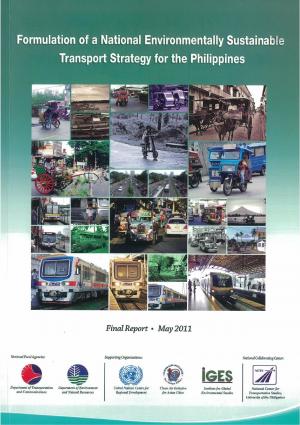Leading Advantages of Transit Advertising Philippines for Companies
Leading Advantages of Transit Advertising Philippines for Companies
Blog Article
Just How Transit Advertising Can Change Public Transport Spaces Into Dynamic Marketing Platforms
Transportation advertising holds significant capacity to redefine public transportation areas right into dynamic advertising and marketing platforms that engage and notify. As we check out the diverse advantages and evolving techniques of transportation advertising and marketing, it increases the inquiry of how this makeover can redefine our communications with both brand names and the metropolitan atmosphere.
Benefits of Transit Marketing

Furthermore, transportation advertising is extremely cost-efficient contrasted to conventional media. It allows advertisers to attain high perceptions at reduced costs, taking full advantage of roi. The restricted audience of commuters offers an opportunity for brands to convey their messages to individuals who are frequently receptive throughout their traveling times.
Furthermore, the dynamic nature of transit marketing enables projects to be updated often, making sure that messaging continues to be appropriate and prompt. This flexibility can be vital in reacting to market patterns or advertising occasions, maintaining the brand name top-of-mind for consumers. Finally, the pervasive presence of transit advertising adds to brand name recall; duplicated exposure within acquainted travel contexts strengthens brand understanding and promotes consumer loyalty, inevitably improving and driving sales brand reputation.
Kinds of Transportation Advertising
Mass transit systems offer various styles for advertising, each dealing with different marketing strategies and audience interaction approaches. One noticeable type is outside bus and train wraps, which cover the entire vehicle and create a mobile signboard effect, permitting high exposure in urban environments. These wraps can catch attention as they go across active roads, getting to a varied target market.
One more prominent layout is interior marketing, which consists of posters, electronic screens, and ads on transit seats. These positionings engage travelers during their trip, strengthening brand messaging in a constrained room. Digital presents, specifically, provide the advantage of vibrant web content, making it possible for advertisers to upgrade messages in real-time.
Terminal marketing is also substantial, including posters, banners, and interactive kiosks within transportation terminals. These ads leverage foot traffic and can target details demographics based on place.
Last but not least, marketing collaborations with transportation authorities can lead to distinct campaigns, such as themed transportation experiences or events, improving the overall involvement with commuters. Each type of transit advertising and marketing uses distinct benefits, allowing brands to customize their technique to properly reach their target market within the public transport ecological community.
Involving Commuters Efficiently
Travelers are increasingly flooded with advertising messages throughout their day-to-day journeys, making it crucial for brands to engage them in ingenious means. To catch attention in this jampacked area, advertisers should prioritize creative thinking and importance. Using attractive visuals and concise messaging can dramatically boost the probability of interaction.
Interactive aspects, such as QR codes or augmented truth attributes, can likewise change fixed ads right into immersive experiences, cultivating a deeper link with the target market. Brands must concentrate on dealing with commuters' requirements and passions, customizing messages to reverberate with their lifestyle, whether with promos for local organizations or services created to enhance their commuting experience.
Additionally, timing plays an important function; purposefully putting advertisements throughout peak commuting hours can make the most of exposure and effect. Involving commuters successfully additionally entails leveraging social networks assimilation, enabling travelers to share their experiences or promos straight from transit platforms, consequently amplifying brand reach.
Essentially, reliable interaction depends upon understanding the commuter trip and producing compelling, interactive, and relevant advertising and marketing experiences that not just catch attention but additionally drive action and loyalty. By this content doing so, brand names can transform mass transit right into a vibrant marketing platform that reverberates with its audience.

Measuring Advertising Effect
Exactly how can brand names accurately analyze the effectiveness of their ad campaign in transportation atmospheres? Gauging the effect of transportation advertising and marketing calls for a multifaceted strategy that combines quantitative and qualitative metrics. One widespread method is tracking involvement with mobile analytics, where brand names can assess foot website traffic patterns and application communications before, throughout, and after projects.
Studies can supply useful understandings into brand recall and customer sentiment, enabling brands to gauge exactly how well their messages resonate with travelers. Additionally, monitoring social media engagement related to particular projects can reveal shifts in public understanding and brand name discussion.

Furthermore, working together with transit companies can boost dimension precision, as they typically have detailed market Learn More Here information on ridership fads. By incorporating these methodologies, brands can establish a thorough understanding of their advertising and marketing effectiveness, guaranteeing that their campaigns not only reach however likewise influence their target market properly.
Future Trends in Transit Advertising
A significant shift is anticipated en route advertising as technological advancements and changing customer actions improve the landscape. Transit Advertising Philippines. The assimilation of interactive media and digital displays is anticipated to boost involvement, permitting brand names to provide dynamic content that resonates with varied target markets. As mass transit systems embrace smart technology, advertisers will certainly utilize real-time data analytics to tailor messages based on passenger demographics and actions
In addition, increased truth (AR) is poised to change the method commuters interact with promotions. By supplying immersive experiences, AR can transform an ordinary trip into an interesting story that captures focus and promotes brand commitment. This advancement will likely encourage marketers to produce more experiential projects that drive customer interaction.
Sustainability is another critical pattern influencing transportation marketing. As environmental consciousness expands, brands will progressively look for to line up with eco-friendly practices, utilizing lasting materials and promoting green initiatives within their campaigns.
Final Thought
To conclude, transportation marketing offers substantial advantages by boosting brand exposure and involving a captive audience. Via various styles, such as outside wraps and electronic displays, it transforms public transportation right into a vibrant marketing system. Effective interaction approaches and robust measurement strategies even more magnify its influence. As trends progress, the possibility for innovative interactions between travelers and brand names is positioned to grow, guaranteeing that transportation advertising and marketing remains an important element of modern-day advertising and marketing strategies.
Transit advertising holds significant potential to redefine public transportation spaces into dynamic marketing platforms that inform and engage. The prevalent presence of transit advertising adds to brand name recall; duplicated direct exposure within acquainted travel contexts enhances brand awareness and fosters consumer commitment, eventually enhancing and driving sales brand reputation.
Just how can brand names precisely evaluate the effectiveness of their advertising and marketing projects in transit environments?In verdict, transit advertising supplies considerable advantages by boosting brand name visibility and involving a restricted audience. Transit Advertising Philippines. As fads develop, the potential click site for cutting-edge interactions in between brands and travelers is poised to grow, ensuring that transportation advertising continues to be a crucial element of modern advertising and marketing techniques
Report this page